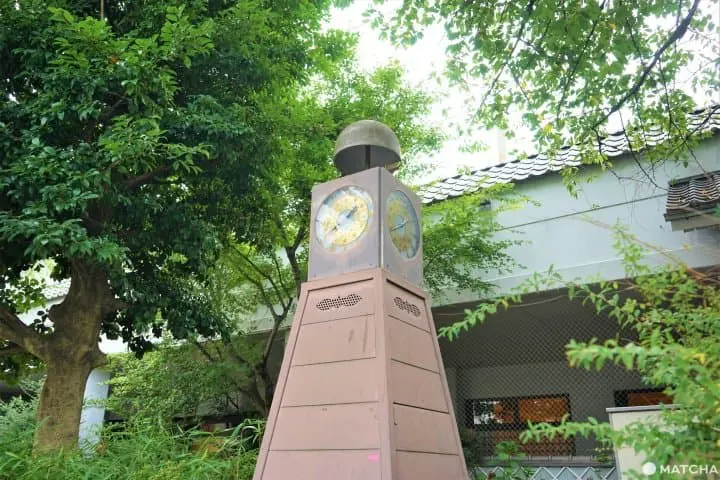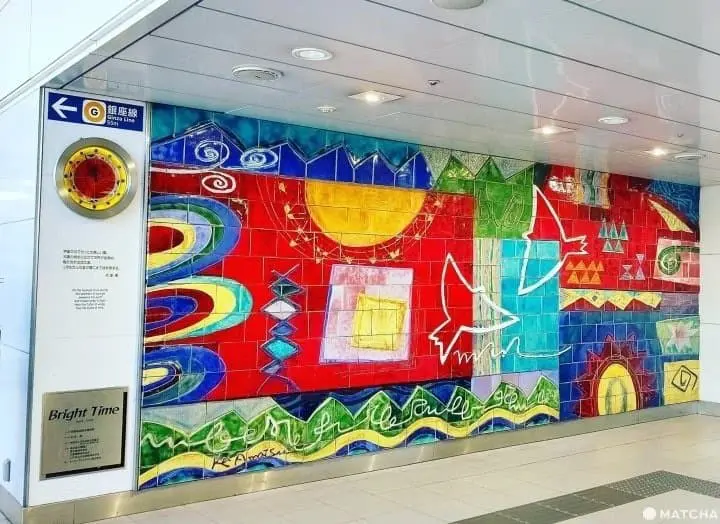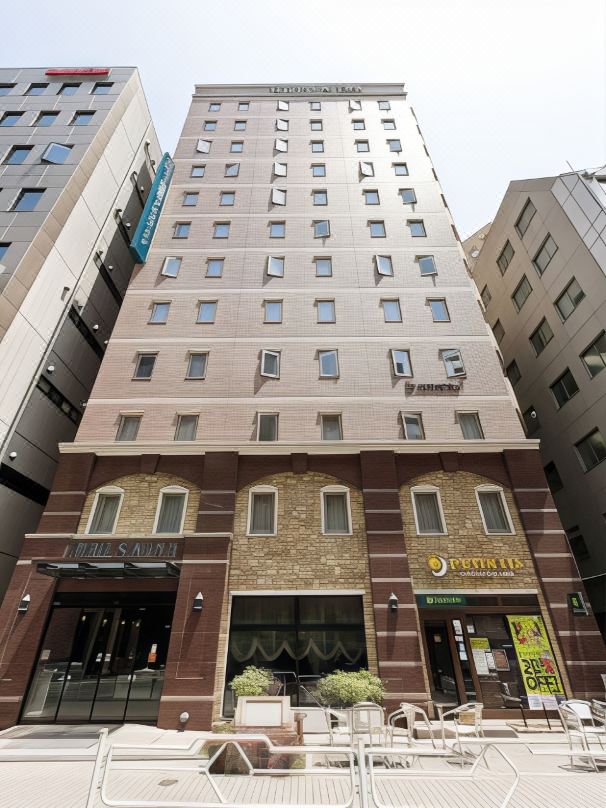Keeping The Time Of Tokyo: 5 Iconic Clocks In Japan's Capital

Clock towers have the practical purpose of keeping the time of the community. We introduce here some of the remarkable clock landmarks in Tokyo. Stop for a minute to see them closely and listen to their ticking sound, which carries stories from the past.
Tokyo Time and Clock Monuments

The clock on the Kitte Marunouchi Building in front of Tokyo Station.
Clocks have essentially a practical purpose: to show the time.
Many European cities and towns have clock towers that announce the time every hour. In the past, when people did not own clocks or watches, clock towers used to mark the time for work or for prayer. Even today, public clocks all around the globe mark the rhythm of life in a community–– it is not an exaggeration to say that they keep the world in motion.
Clocks make it possible for us to meet, to gather together, and to synchronize our efforts for a common purpose. Synchronized movement also happens to be the prerequisite for technology. In fact, the more developed a country is, the more sophisticated its clocks. This theory still needs to be verified, but so far, it proves true for Japan, home to some of the leading clock manufacturers in the world.

Clock on Aoyama Avenue
Tokyo in particular is a place where one can feel the relation between clocks and technology. The clocks above the entrances to the Tokyo Station building, the clock on the NTT Docomo Yoyogi Building in Shinjuku, which is visible from afar even at night, or the large horoscope clock over Aoyama Avenue--there are many public clocks in the city that are hard to pass unnoticed.
They make us think about the decades that passed with those clocks watching over the city and setting the rhythm of people's lives.
Let us introduce five beautiful clock monuments in Tokyo whose meaning goes well beyond marking the time of the city. They are symbols of the metropolis, speaking of history and technological developments. And it's well worth going out for a walk to just see them and ponder the history and stories behind them.
1. Wako's Clock Tower, Ginza

Picture from 15 Unusual Things To Do In Ginza
The clock located above the Wako department store in Ginza is not only a symbol of Tokyo but also a landmark in the history of Japanese clock making.
The Wako building is owned by leading Japanese clock and watch manufacturer Seiko. The beginnings of Seiko go back to 1881, when Kintaro Hattori (1860-1934), a young entrepreneur, opened a clock shop in Kyobashi, near Ginza. Those were the early years of the Meiji era (1868-1912) when Japan embraced industrialization. Hattori sensed the increasing public need for accurate clocks and watches and dedicated his life to developing quality clock pieces and watches.
Soon after the Kintaro Hattori Watch & Clock Shop opened the Seikosha Factory and their second store in Ginza, the first Hattori Clock Tower was installed above the building in 1894. This was the first generation Wako clock.

After the Great Kanto Earthquake in 1923 that brought great damage to Tokyo, the Seiko headquarters had to be rebuilt from scratch. The present-day Wako clock tower was completed in 1932, and it has been marking the time of the city ever since, becoming an icon of Ginza.
Seiko has continued to be an innovator in clock technology and electronics with globally-impactful inventions. For example, Seiko introduced the world's first quartz wall clocks in 1968 and the first quartz watches in 1969. In 1973, they came out with the first 6-digit LCD watch in 1973, and introduced the first solar GPS watch, Seiko Astron, in 2011.
The story behind the Seiko brand is truly inspiring. If you wish to learn more, visit the Seiko Museum Ginza, located very close to the Wako building. The five-story museum has exciting exhibits of ancient and historical clocks from around the world, as well as the latest clocks and watches developed by Seiko.
2. Yukku-Rhythm Pendulum Clock, Shinjuku NS Building

One of the most impressive clock monuments in Tokyo is the Yukku-Rhythm Pendulum Clock located in the Shinjuku NS Building. Built in 1982 by Seikosha, it was the world's largest mechanical pendulum clock at the time. With a total height of 29 m, a pendulum length of 22.5 m, and a dial length of 7.2 m, this clock was even mentioned in the Guinness Record Book.
A waterwheel powers the clock, and the pendulum completes a swing every 30 seconds. This mechanism gives the clock a distinctive slow-paced rhythm that stands at the origin of the clock's name: yukkuri (slow) + rhythm.

Another feature of this clock is that, instead of showing the hours, the dial is split into twelve sections corresponding to the traditional Japanese zodiac (junishi). Each section corresponds to two regular hours (1:00 - 3:00 AM is the Hour of the Cow, 5:00 - 7:00 AM is the Hour of the Rooster, etc.), which means that the clock hand makes a complete round of the dial in one day (24 hours), not in 12 hours as any regular clock.
In other words, this impressive clock brings together two different ways of timekeeping––the modern-day method and the traditional Japanese method.
The Shinjuku NS Building is an office complex with several cafes and restaurants on its precincts. Stop for coffee here and enjoy your break with the relaxing sound of this clock in the background. Time seems to slow down here thanks to the Yukku-Rhythm Pendulum Clock.
3. Nippon Television's Big Clock, Shiodome

Nippon Television's Big Clock, also known as the Giant Ghibli Clock or the Nittele Big Clock, is displayed on the facade of the Nippon Television Building near Shiodome Station. Designed by Studio Ghibli director Hayao Miyazaki, the clock was revealed in 2007 and took six years to make.
At the sight of this magnificent clock, Ghibli fans will be reminded of Howl's Moving Castle (2004). Indeed, the clock looks like it's about to stand on two feet any time and head for a new horizon.

The Ghibli Clock has many fascinating details that can be observed up close, such as a small clock inside, several puppets that seem to be at work, many small doors, windows, and lanterns.

The clock comes to life at 12:00, 13:00, 15:00, 18:00, and 20:00 on weekdays, and at 10:00, 12:00, 13:00, 15:00, 18:00, and 20:00 on weekends. (*1)
During the 3-minute shows, the mechanical puppets move and announce the time. It is a heartwarming spectacle of movement, sound, and lights.
*1... In 2020, as a measure to prevent the spread of COVID-19, the shows occur only twice a day: at 15:00 and 20:00.

The Nittele Big Clock was created as a symbol loved by all the citizens. To this day, its hourly shows draw many viewers who enjoy the playfulness and beauty of this clock.
Hotels near Hayao Miyazaki's Ghibli Clock
4. The Mechanical Puppet Clocks in Ningyocho

Japan boasts remarkable contributions to the development of robotics and advanced technologies. The roots of this gift for technology can be traced back to the Edo period (1603-1868) when Japanese craftsmen developed sophisticated automatons (mechanical puppets), as well as other devices, including clocks.
A monument that reminds us today about the cherished Edo-period automatons is the mechanical puppet clock near Ningyocho Station, revealed in 2009. Ningyocho was home to many Kabuki and puppet theaters in the past, and many puppet artisans and puppeteers used to live in this area. This clock mounted on a yagura tower is a reminder of those times.

Every hour, when the minute hand strikes twelve, a mechanical puppet show starts. Puppets representing various types of Edo citizens, from merchants and samurai to geishas, come out to do a short performance. There is even a rakugo storyteller telling a short tale about the city.

This clock has a twin on the opposite side of the intersection--a monument dedicated to the firefighters of Edo. These fascinating structures called Karakuri Yagura (automaton towers) remind us of the Edo-period mechanical puppets that were the beginnings of Japanese robotics, a side of Japanese culture that tends to be forgotten.
5. Daimyo Clock, Sendagi

Japanese clock (wadokei). Photo by Pixta
Any story about clocks in Japan would be incomplete without mentioning wadokei, the traditional Japanese clocks developed in the Edo period (1603-1868).
The first mechanical clocks were brought to Japan by Spanish missionaries during the second half of the 16th century. Japanese craftsmen learned the principles of clock making from foreign missionaries in places like Nagasaki and Kyoto. However, the lunar calendar was employed during those times in Japan, and efforts were made to adapt clocks to the lunar calendar that divided the day in twelve hours.
Moreover, the traditional calendar conceived daytime and nighttime as equal. This meant that they each lasted six hours each, but since daytime is longer in the warm months and shorter in the cold months, that meant that the length of each hour changed with the season. Edo-period clockmakers strived to create clocks that reflected the seasonal time by showing not only the time of the day, but also the day of the week, and the month.
The shogun or powerful daimyo feudal lords sponsored the clockmakers so that they would create these accurate and extremely sophisticated mechanical clocks. This is why wadokei are also called daimyo clocks.
Japanese traditional clocks achieved the feat of synchronizing clock time with the rhythm of nature, with the seasons, and the natural sequence of day and night. Western mechanical clocks had sacrificed natural time by splitting time into perfectly equal, fixed sections.
Japan embraced many western standards after the Meiji Restoration (1868), employing the Gregorian calendar and the fixed time system. As a result, the tradition of Japanese clockmaking was lost. Very few clockmakers remained in business by using their skills in engineering. The best known of them is probably Tanaka Hisashige (1799-1881), an extremely skilled inventor and clockmaker, whose work laid the foundation for what would become the leading electronics and technology brand, Toshiba.

In addition to the Seiko Museum introduced above, the Daimyo Clock Museum in Yanaka also has an impressive collection of traditional clocks. Do stop by to marvel at these timepieces when visiting the Yanesen area.
The clock pictured above is located near Sendagi Station, in front of the Yanaka Elementary School. Although it is a regular clock, its shape was inspired by that of Wadokei clocks mounted on a yagura tower-like structure.
This clock stands as a quiet reminder of the age when ambitious inventors used to revolutionize the technological achievements of their time on a daily basis, striving to adapt mechanical time to nature's time.
Discover the Clocks of Tokyo

"Bright Time" clock in Shibuya Station
We hope that this article will make you curious about Tokyo's clock monuments. During your walks in the city, do stop for a minute to see them and listen to their rhythm. It's another way of experiencing the time of the Tokyo metropolis.
The author of this article is a clock enthusiast who often travels for the sole purpose of finding beautiful clocks monuments.
Clocks tend to reveal more about space than about time, as they tell a lot about the communities that cherish them. The author likes to call them ”the beating heart of the city,” and keeps pictures of the clocks encountered during her travels on an Instagram account dedicated to timepieces. She dreams of turning the account into a collection of clocks from Japan and, why not, from all around the world.
Ramona, English content editor at MATCHA since 2016, has been practicing ikebana flower arrangement (Ikenobo School) and tea ceremony (Omote Senke) since 2012. She arrived in Japan in 2012 as a graduate student with a focus on Japanese literature and performing arts. As a travel editor and writer, Ramona has visited and documented 40 of Japan's prefectures with a focus on art, history, traditional Japanese crafts, and performing arts.

















































![[Coupon Available] Attention Overseas Winter Sports Fans! Nagano's Sports Depot Has Evolved](https://resources.matcha-jp.com/resize/720x2000/2026/01/05-254819.webp)
![[2 hours from Tokyo ] 10 Quiet and Breathtaking Views of Mount Fuji in Yamanashi Hokuto City , Yamanashi - Part 2](https://resources.matcha-jp.com/resize/720x2000/2025/12/16-253037.webp)

![[Reopening in March 2026] Ikoma Sanjo Amusement Park Park, 45 minutes from Osaka , with free admission](https://resources.matcha-jp.com/resize/720x2000/2024/08/28-194409.webp)